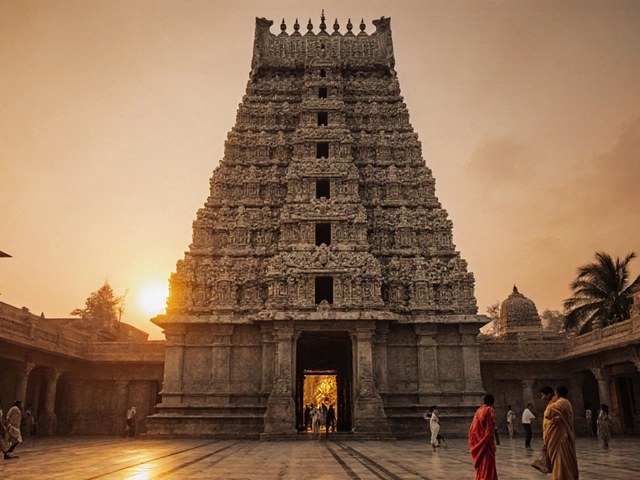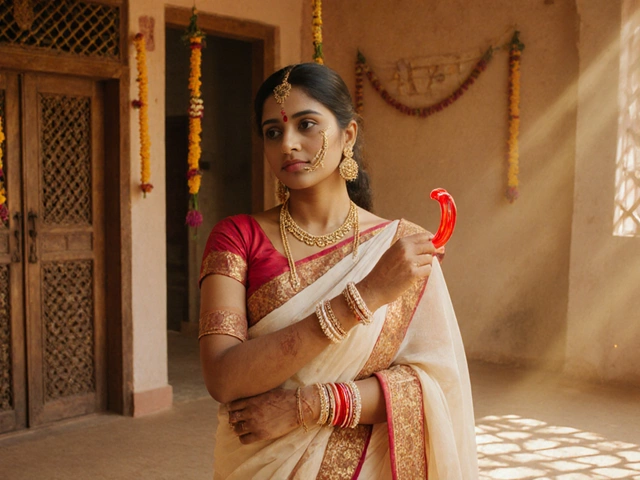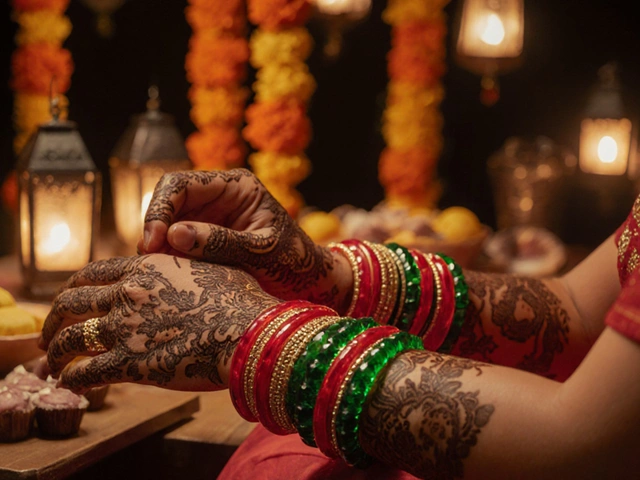
The kirpan, a ceremonial dagger, holds profound significance in Sikhism. It is not just a weapon, but a sacred symbol of faith, representing duty and justice. Understanding its essence helps in appreciating its value to the Sikh community.
For non-Sikhs, the question of carrying a kirpan can be intertwined with legal, cultural, and religious considerations. Each aspect requires careful thought to ensure that actions are both lawful and respectful to Sikh traditions.
This article explores key ideas surrounding the kirpan, its cultural importance, and practical advice on how individuals outside the Sikh faith can engage with this symbol of spirituality with respect and understanding.
- The Cultural Significance of the Kirpan
- Legal Considerations for Non-Sikhs
- Guidelines for Respectful Practice
- Understanding and Supporting Diversity
The Cultural Significance of the Kirpan
The kirpan is far more than a simple blade possessed by warriors; it is a spiritual article all Sikhs are enjoined to wear at all times as a religious commandment. Tracing its origins back to the founding of Khalsa Panth by Guru Gobind Singh in 1699, the kirpan symbolizes a Sikh's duty to stand against injustice and protect the vulnerable. This emblem of courage, self-sacrifice, charity, and dignity, is one of the five essential Articles of Faith that define Sikh identity, known collectively as the Five Ks. Traditionally ranging in size from a few inches to several feet, the kirpan's design embodies both its functional and symbolic roles.
For many Sikhs, the act of wearing a kirpan is an honored daily ritual. The knife symbolizes not only their spiritual dedication but also their commitment to uphold moral rightness. Each time they touch the kirpan and drape it across their body, it rekindles their connection to centuries of resilience, sacrifice, and the perpetual mission for justice. An interesting point to note is that Guru Gobind Singh explicitly instructed that the kirpan should never be used for exploitation or intimidation, but solely as a tool of defense and compassion. This guidance aligns with the Sikh principle of 'Nirbhau' or living without fear, yet with humility and responsibility.
The kirpan, unlike other artifacts of faith, is often misunderstood outside the Sikh community. Many see it solely as a weapon, missing its layered depths of meaning. To counter such misconceptions, Sikh leaders around the globe have consistently advocated awareness and understanding. "For us, the kirpan is a constant reminder of our duties towards humanity," explains Harbinder Singh, spokesperson for the Sikh Council. "It is not about the imposition of faith but rather the upholding of human dignity and justice." The intricacies tied to carrying a kirpan illustrate the importance of faith in everyday actions among its adherents.
In Sikh households, the kirpan holds a revered place, often passed down through generations, deepening its familial and cultural significance. It is common to find it prominently displayed with other revered articles of Sikh heritage. For children growing up in Sikh families, the kirpan is introduced progressively, often beginning with educational narratives of the Sikh Gurus’ history and comparative discussions on moral courage. By the time they formally wear a kirpan during their Amrit Sanchar ceremony – akin to a confirmation or coming-of-age ritual – they have imbibed the values it stands for, prepared to carry forward the mantle.

Legal Considerations for Non-Sikhs
When considering the carrying of a kirpan by non-Sikhs, it's vital to understand the legal frameworks that surround this sacred item. In countries where Sikh communities are well-established, such as the UK, Canada, and the USA, there are often specific legal guidelines that recognize the kirpan's religious significance. These laws usually allow practicing Sikhs to carry one in public spaces, acknowledging the kirpan not as a weapon but as a religious symbol. However, the situation becomes less clear when it comes to non-Sikhs, as they do not have the same religious context that necessitates the carrying of a kirpan.
The law typically addresses religious liberties, offering protection under acts such as the UK's Equality Act 2010 or the First Amendment in the United States, which protect religious freedoms. These pieces of legislation often pave the way for exemptions in places with stringent security, like airports or schools. But the use of a kirpan by non-Sikhs could potentially face legal challenges, as the exemption is primarily for Sikh religious practice. Non-Sikhs wishing to carry a kirpan might be required to explain their intent, demonstrating a deep understanding and respect for its religious significance.
According to a renowned human rights organization,
"The balance between religious freedom and public safety is delicate, requiring individuals to not only understand their rights but also the cultural and legal context within which those rights are exercised."It's not just about carrying the kirpan but about respecting its sanctity while acknowledging the legal implications.
Non-Sikhs who are interested in wearing the kirpan as a sign of solidarity or cultural appreciation ought to also be aware of location-based rules. In regions around the globe, state or city laws may place specific limitations due to the kirpan's inherent nature as a blade. While these vary significantly, they usually focus on the length of the blade, how it’s worn, and areas where it might be prohibited for safety reasons. Engaging with Sikh community leaders and educators can provide insights into respectful ways to show support without overstepping legal and cultural boundaries.
While legal permissions can sometimes appear a bit daunting, it’s essential to approach them with sensitivity and informed caution. This can help foster a greater understanding and respect for the kirpan’s symbolism, allowing non-Sikhs to engage meaningfully with this part of Sikh tradition while remaining within legal constraints.

Guidelines for Respectful Practice
When considering the act of carrying a kirpan as a non-Sikh, it is crucial to approach the matter with deep respect and understanding of its cultural and religious symbolism. The kirpan is one of the five articles of faith required by Khalsa Sikhs, symbolizing spiritual authority and the Sikh duty to protect the weak and promote justice. Therefore, the act of carrying a kirpan should not be undertaken lightly, nor should it be reduced to a mere curiosity or fashion statement.
First, it is essential to educate oneself about the history and significance of the kirpan. This sacred dagger is meant to remind Sikhs of their responsibility to stand against oppression and injustice. Engaging with the Sikh community to gain insights and perspectives is advisable. Understanding the spiritual motive behind it can prevent misinterpretations or misuse by those unfamiliar with its sacred connotations. Many Sikh leaders emphasize the need for this knowledge-sharing, expressing that awareness can pave the way for mutual respect and coexistence.
For those outside the Sikh faith, legally acquiring and carrying a kirpan involves navigating a complex realm of secular laws and religious liberties. In many countries, including the UK, the law acknowledges the religious significance of the kirpan and often allows Sikhs to carry it for ceremonial purposes. However, such allowances may not extend to non-Sikhs. Engaging with legal experts and understanding these nuances ensures that one's actions comply with constitutional norms. It's important to remember that cultural appreciation does not override legal requirements.
Communicating openly with the Sikh community can foster goodwill and collaboration. Sikh leaders often organize workshops or community events where questions are welcomed, creating a dialogue that reinforces respect for Sikh customs. Such initiatives can be platforms for non-Sikhs to learn how to support Sikhs in practicing their faith freely.
As Jasjit Singh, a researcher on religion and public life, highlights, "Interfaith engagement is a vital component of building understanding and community cohesion." Encouraging this engagement can help dispel myths and foster genuine relationships based on respect and empathy.
Lastly, if wishing to participate in Sikh traditions or ceremonies such as weddings or celebrations, imply a level of reverence for Sikh symbols, including the kirpan. Adhering to customs, such as covering one’s head in a gurdwara, demonstrates respect for Sikh beliefs. If granted permission to participate in ceremonies that involve the kirpan, ensure compliance with all guidelines provided by the hosts, respecting their religious boundaries.
In conclusion, while non-Sikhs may be curious about the kirpan, approaching the topic with an attitude of learning and humility is key. Respecting the sanctity of this revered symbol, understanding its importance, and engaging respectfully with Sikh communities are the best approaches to adopting a supportive stance towards religious diversity and cohabitation.

Understanding and Supporting Diversity
In today's globally connected world, the appreciation and support of diversity stand as both a moral obligation and a societal benefit. When it comes to religious symbols like the kirpan, understanding their significance plays a critical role in fostering tolerance and mutual respect across different cultures and faiths. Sikhism, one of the world's major religions, emphasizes the principles of equality and community service, highlighting a profound way of life that encourages its practitioners to live morally and justly. Respecting the right to carry religious symbols like the kirpan, therefore, is not only about accommodating religious practices but also about recognizing and celebrating the diverse cultures that enrich our societies.
The kirpan is more than an artifact; it is a symbol of freedom and spiritual devotion. For many Sikhs, it represents the responsibility to protect the weak and promote justice, serving as a reminder of moral truths central to their faith. As societies become increasingly multicultural, the challenge lies in finding ways to honor these symbols while balancing public safety and understanding. Legally, some countries have provided exemptions acknowledging the significance of the kirpan, thereby allowing for a nuanced understanding of its importance. This move facilitates inclusion, sending a clear message: different does not mean dangerous.
Engaging with these dimensions of religious expression requires a commitment to diversity in thought and action. One powerful way to support diversity is to educate oneself about the symbols and their meanings in various cultures. This approach demystifies them, fostering empathy and blurring the lines of fear and misconception. Educational programs in schools and workplaces can serve as platforms for dialogue, helping communities to better understand neighbors and colleagues who might carry a kirpan daily. In many instances, collaborative discussions between community leaders, law enforcement, and policymakers have led to policies that uphold safety without compromising the Sikh identity. A quote by cultural historian Dr. Jade Mathur encapsulates this:
"Understanding the kirpan is not just about accepting another culture, but embracing a shared human history of diversity and unity."
Promoting diversity does not stop at legislation or education. On a personal level, showing respect involves open curiosity and active listening. We can engage by learning, asking questions respectfully, and participating in community events like cultural festivals and interfaith dialogues. These engagements not only deepen our appreciation for the kirpan as part of Sikhism but also enrich our own lives with insights into values that we may share among different faiths. Therefore, the pursuit of understanding becomes a two-way street, where both Sikhs and non-Sikhs contribute to a more harmonious coexistence, championing inclusion as a core societal value.
Ultimately, the key to genuine support of diversity lies in viewing it as a strength rather than an obstacle. Differences in practices, such as the wearing of the kirpan, enrich our collective experience, providing an opportunity to learn and grow beyond our comfort zones. By embracing these opportunities with open minds and hearts, we reinforce the universal principle of unity in diversity, where each culture and practice offers a unique contribution to the tapestry of human society.







